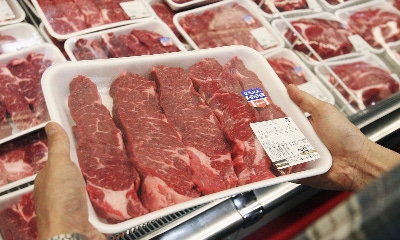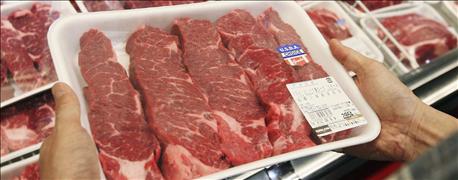March 29, 2016

In a year of increasing beef and total meat production, positives for livestock prices have been hard to come by. Even meat export growth, a bright spot for the meat industry over the past couple decades due to its ability to help offset production growth, is struggling.

MADE IN THE USA: Increased U.S. meat supplies and expected decline in beef imports will increase the likelihood that the hamburger bought at the grocery store or your favorite fast food outlet was sourced from beef produced here in the U.S.
Though showing signs of recovery following 2015's third consecutive annual decline and largest year to year decline since BSE decimated beef export levels in 2004, this year's export levels have not able to put a significant dent in U.S. production increases. However, one dynamic at play in domestic and global beef markets is helping ease a situation of consumer demand struggling to keep up with an increasing meat supply: beef imports.
Beef imports into the U.S. are projected to drop perhaps as much as half a billion pounds in 2016, roughly equivalent to 1.5 pounds of beef per U.S. resident. To think about it a different way, with roughly 650 pounds of carcass weight beef production per U.S. beef and dairy cow, the expected decline in imports this year approximates the effect of a herd with 750 ,000 fewer cows. That's enough to provide some support to declining cattle and beef prices.
Where's the beef?
With a large majority of U.S. beef imports competing in the grinding beef market as very lean product, grass-fed beef from Australia and New Zealand have provided over half of our imported beef in recent years.
Australia is in the midst of cattle herd rebuilding following the highest slaughter levels in more than 35 years in 2014-15. The cattle herd there is expected to show a further modest decline this summer relative to last summer's inventory count, which was down over seven percent vs. the prior year. Though the U.S. dollar strengthened relative to Australia's currency by more than 30% from the summer of 2014 to early this year, it is unlikely to think that beef shipments from Australia can remain anywhere near the levels of last year as they build back a smaller herd.
New Zealand's cattle herd is also experiencing modest declines due to weak global dairy product prices. Dairy cows outnumber beef cows 5 to 1 in New Zealand.
Canada is the next largest exporter of beef to the U.S., accounting for around 20% of total imports in recent years. Canada's cattle herd declined for 8 of the 10 years from 2005-2015, and is now 20% smaller than a decade ago.
Similar to the U.S., herd rebuilding in Canada was delayed by dry weather, but is set to take place for the next couple of years now that drought conditions have improved. Canada will find it difficult to hold on to the U.S. beef shipment increases gained during the last two years.
~~~PAGE_BREAK_HERE~~~
Help for U.S. beef
Factors in the U.S. cattle industry should also point toward reduced beef imports for the next couple of years. Combined beef and dairy cow slaughter, which reached its lowest level in 10 years in 2015, is on the increase this year due to a larger beef cow herd and lower profitability for cow-calf operators and milk producers. Prices for cow beef have declined substantially in recent months, lessening the incentive for those purchasing grinding beef to look outside of our borders.
There is no doubt that 2016 and beyond will include some periods of tough price environments for cattle and other livestock producers. Just as a number of developments led to less per person meat availability for U.S. consumers for most of the 2008-2014 period, the reverse is now in effect, and likely to persist in the medium term.
One relief valve for higher U.S. meat supplies is the expected decline in beef imports. Not only will that lessen the negative impact to cattle prices from burgeoning meat supplies, it will also increase the likelihood that the hamburger bought at the grocery store or your favorite fast food outlet was sourced from beef produced here in the U.S.
Brown is a livestock economist with the University of Missouri. He grew up on a diversified farm in northwest Missouri.
You May Also Like




